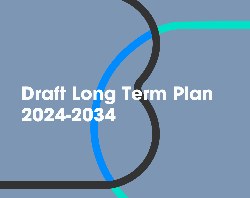Reserve Bank MPS: Governor's Overview
Reserve Bank Of New Zealand
Press Release
OVERVIEW AND POLICY ASSESSMENT
The Bank has decided to leave the Official Cash Rate at 4.5 per cent. If the economy evolves as now projected, however, it looks increasingly likely that there will need to be some increase in that rate before the end of the year. Without such an increase, we could face the prospect that inflation in one to two years' time will be pushing towards, or even through, the upper end of the 0 to 3 per cent target range.
Since our May Monetary Policy Statement, there have been several developments which point in the direction of stronger and earlier inflation pressures. The most important of these is a relatively marked change in the outlook for the world economy. In May, using the April Consensus Forecasts, we saw an increase in the export-weighted GDP of our 14 main trading partners of 1.9 per cent in 1999. The July Consensus Forecasts, on which these projections are based, suggest growth in those countries of 2.7 per cent this year and slightly more than previously projected next year as well. This additional growth in our main trading partners, together with a general perception that the international economy has become rather less fragile, provides a significantly more positive environment for the New Zealand economy than was envisaged only three months ago.
Moreover, it appears that there is less spare capacity in the economy than we thought previously. These two factors taken together suggest that the point at which growth in demand will start to put upwards pressure on inflation is some 12 months earlier than previously assessed, in late 2000 rather than in late 2001.
In other words, the economy appears to be growing slightly faster than potential output, and the output gap is closing. At the time of writing, it seems clear that the New Zealand economy has been maintaining a growth rate of something like 3 per cent per annum for the last 12 months. Credit continues to expand briskly, wages seem to be growing well ahead of productivity, and measured inflation is likely to increase significantly over the next year. Monetary conditions remain stimulatory. Indeed, they are considerably easier than they were prior to the release of our May Statement because of the fall in the exchange rate since that time. We recognise that all too often central banks find themselves behind the game, realising only after the event that they were a bit too slow to respond to changing conditions. All of these factors suggest that the time is approaching when it will be appropriate to begin putting a little less pressure on the monetary policy 'accelerator'.
This does not mean that we see any imminent need to 'hit the brakes' however, and as usual there are conflicting signals on the monetary policy check-list. Although the world economy is looking considerably more robust than previously, there remain some significant question marks, such as the strength and duration of the recoveries in Japan and Korea, the prospects for growth in China and Latin America, and the possibility of a stock market correction in the US. Domestically, we suspect that confidence is still relatively fragile. There are a few signs that credit growth, while still not slowing, is at least no longer accelerating. Longer-term interest rates have already risen quite sharply, largely because of a strong rise in international bond yields. And importantly, the significant near-term increase in inflation is a result of a small number of clearly identifiable 'one-offs': generalised inflationary pressures are expected to pick up more gradually.
Financial markets are expecting an increase in the Official Cash Rate over the next six to 12 months. Most market analysts have been expecting the Bank to increase the Official Cash Rate late this year or early next, while forward markets are pricing in an Official Cash Rate of approximately 5.75 per cent by the middle of next year.
On balance, as indicated, the Bank has decided to leave the Official Cash Rate unchanged at this point, but it looks increasingly likely that an increase in that rate will soon be appropriate.
ENDS


 Business Canterbury: Urges Council To Cut Costs, Not Ambition For City
Business Canterbury: Urges Council To Cut Costs, Not Ambition For City Wellington Airport: On Track For Net Zero Emissions By 2028
Wellington Airport: On Track For Net Zero Emissions By 2028 Landcare Research: ANZAC Gall Fly Release Promises Natural Solution To Weed Threat
Landcare Research: ANZAC Gall Fly Release Promises Natural Solution To Weed Threat NZ Anti-Vivisection Society: Auckland Rat Lovers Unite!
NZ Anti-Vivisection Society: Auckland Rat Lovers Unite! University of Canterbury: $1.35 Million Grant To Study Lion-like Jumping Spiders
University of Canterbury: $1.35 Million Grant To Study Lion-like Jumping Spiders Federated Farmers: Government Ends War On Farming
Federated Farmers: Government Ends War On Farming



